Augmentation (reconstruction) of bone, maxillary sinus lift
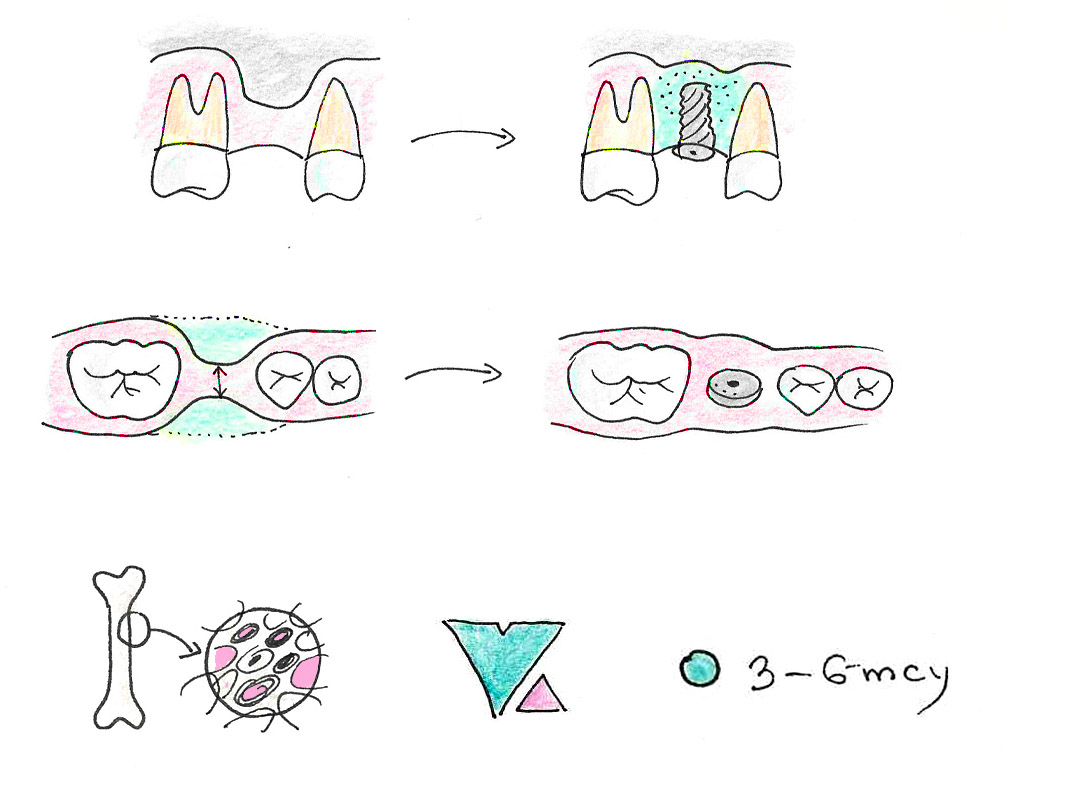
What does augmentation (bone reconstruction) involve?
The patient's bone serves as the base for the implant. If - in a great simplification, we imagine that implantation (implant placement) involves "installing a titanium screw" in a board, then our bone is that board.
There must be enough of it in every spatial dimension so that our future titanium root (implant) does not protrude outside.
Under high magnification, the bone looks like a sponge, in which there are spaces filled with blood vessels responsible for its nutrition and remodeling. Thanks to the fact that it is alive, it maintains the appropriate height and width, allowing the implant with the crown to be maintained in the oral cavity.
In the case of bone loss, which mainly results from the lack of load after the tooth has been removed, inflammatory processes around infected roots or the lack of tooth buds - we need to rebuild it.
How to check if we have enough bone before the implant surgery?
Do I need augmentation or sinus lift procedures?
The examination that unequivocally determines the level of bone in all planes is a tomographic examination (CBCT). Based on the image and specially created software, we are able to measure the bone to tenths of a millimeter.
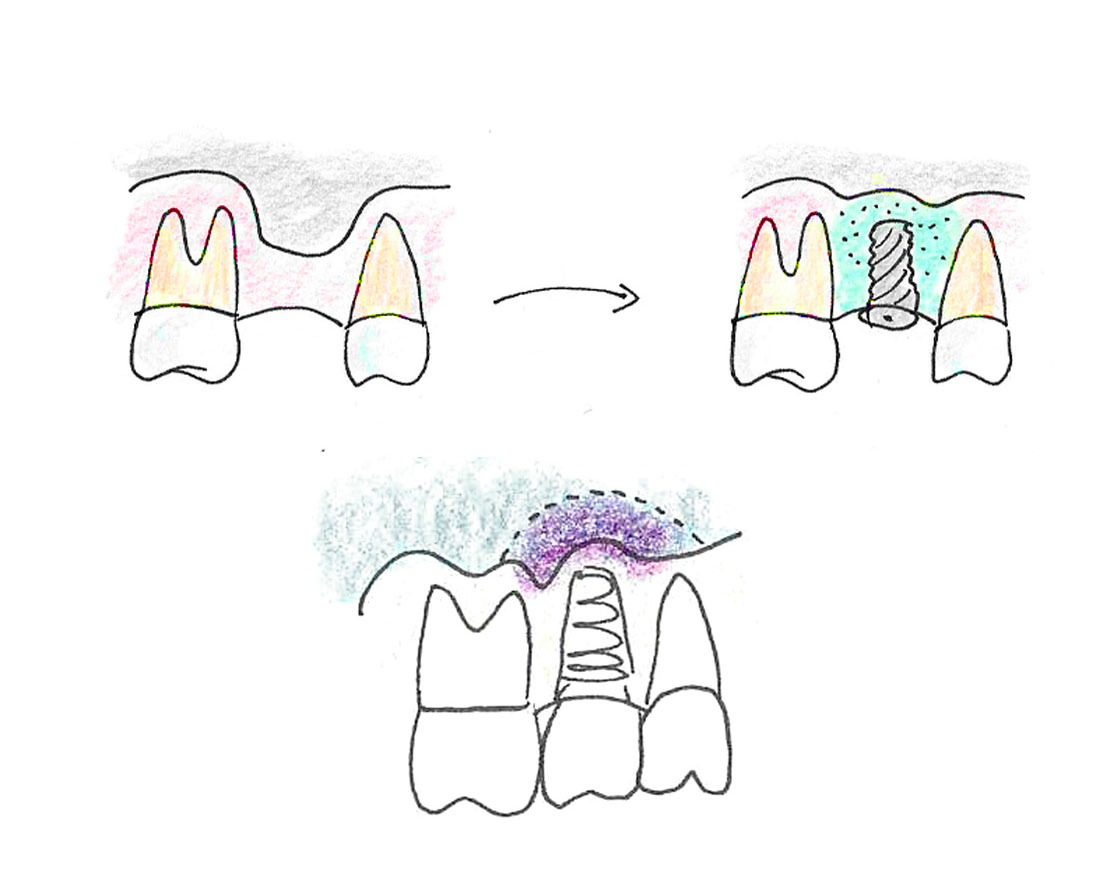
What does maxillary sinus lift involve?
The procedure of maxillary sinus lift is a special type of augmentation related to the maxilla (upper teeth). As a result of tooth loss, there is a reduction in the amount of bone and an enlargement of the maxillary sinuses.
The maxillary sinus is an empty space above the upper teeth, where the air is warmed and cleaned during nasal breathing.
In case of insufficient bone height, we need to rebuild it by "lifting the maxillary sinus" and creating space for a future implant.
Depending on the amount of own bone, we can perform this procedure in two ways:
-
When the height of the own bone is equal to or greater than 3 mm - we perform the procedure using the "closed method" - most often along with implantation.
-
When less than 3 mm of bone remains - we perform the procedure using the "open method" - usually requiring 3-6 months of regeneration.
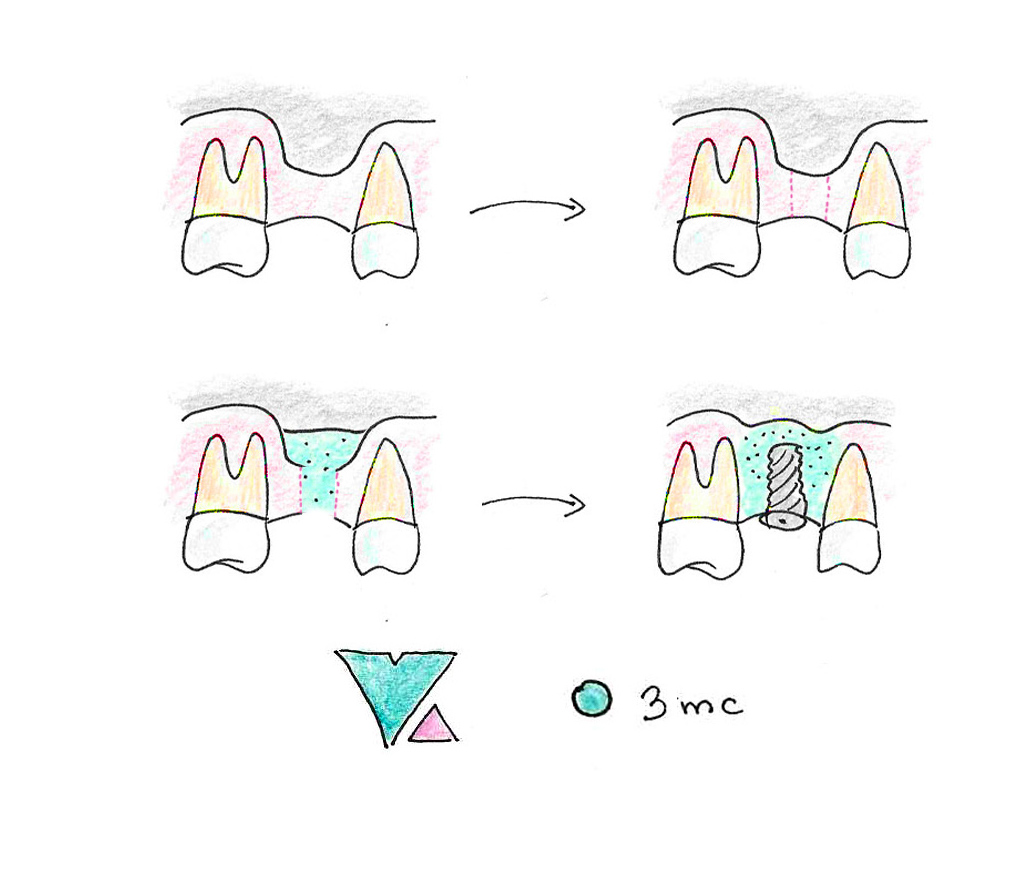
What does the closed method sinus lift involve?
This method involves the introduction of a bone substitute in the position of the future implant. It is the most patient-friendly, but it requires "having 3 mm" of own bone.
The implantologist creates access to the sinus in the same place where the implant is then introduced.
In Kwiatek Clinic, the most common procedure performed during sinus lifting by the closed method is the use of "hydrostatic pressure to lift the sinus membrane".
Using the TOCA AQUA set, the sinus mucous membrane is lifted by the pressure of saline, released from 5 special holes introduced into the bone.
This ensures a gentle lifting of the sinus membrane, minimizing the possibility of its rupture. Then, using special tools, a bone substitute is placed along with the implant.
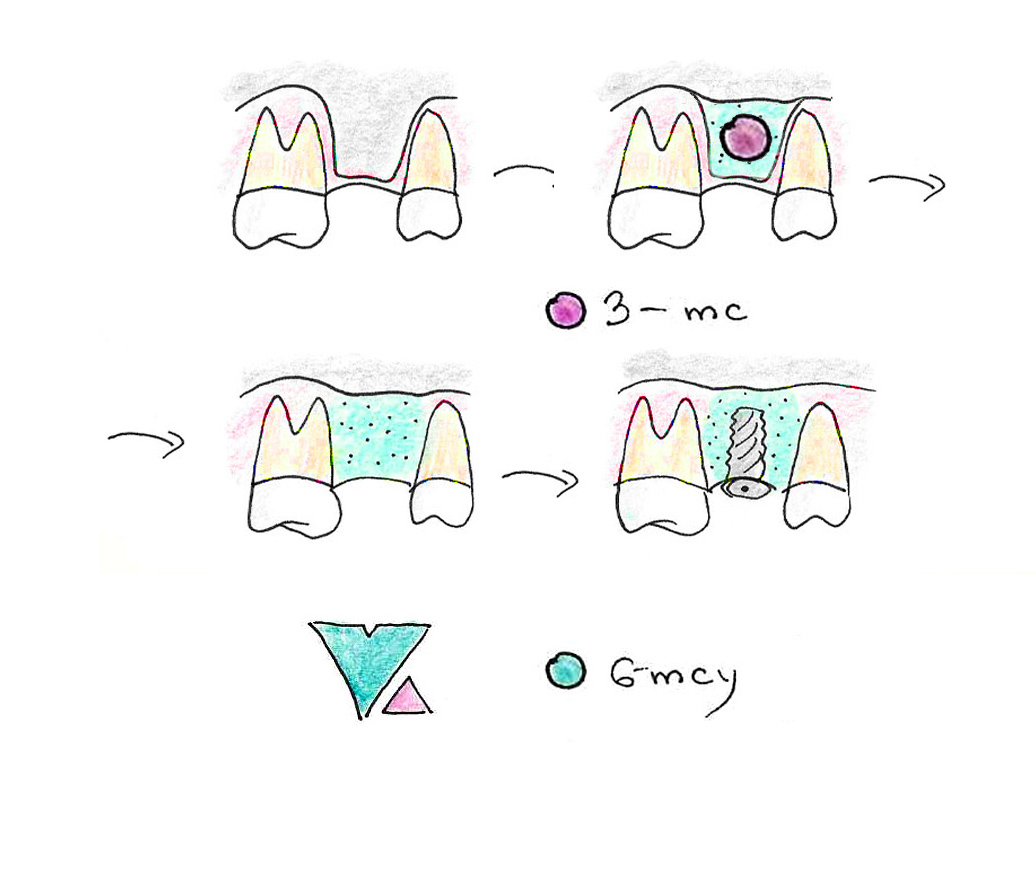
What does the open method sinus lift involve?
We most often use this method when the height of the own bone is below 3 mm and a much larger bone reconstruction is necessary.
It involves creating a small "window" on the side of the alveolar process using special tools and introducing the appropriate amount of bone substitute, which is then closed with a special membrane.
At Kwiatek Clinic, we use dedicated piezoelectric tools to create the "window", which, unlike a traditional drill - through gentle vibrations, allow access to the sinus while minimizing the possibility of damaging its membrane.
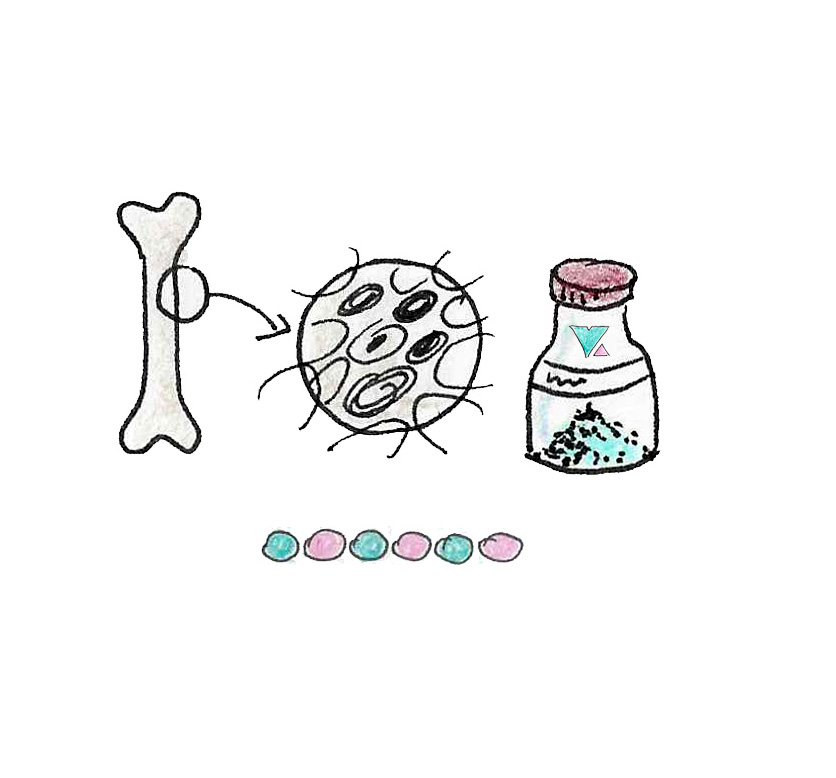
What is a bone substitute? What types are there? Is it a safe material?
Bone substitute material - is a preparation appropriately prepared (subjected to chemical, physical, biological treatment) based on which the reconstruction of own bone takes place.
Due to its origin, we distinguish the following types.
a) Xenograft - derived from other mammalian species (most often of pig or bovine origin)
b) Autograft - derived from the Patient himself, taken from another area and transplanted to the place where it is missing (e.g. transplant from the chin, mandibular line)
c) Allograft - derived from another human from a tissue bank. Used similarly to blood from a blood bank, during surgical procedures.
d) Plant / synthetic materials - of plant origin (from seaweed) or synthetically produced.
All materials - are tested and sterilized, so that they contain only inorganic bone substances (its mineral skeleton), on the basis of which the body rebuilds its own bone.
They are fully certified and safe to use. The type of material, its quantity is selected by the doctor when planning the procedure.
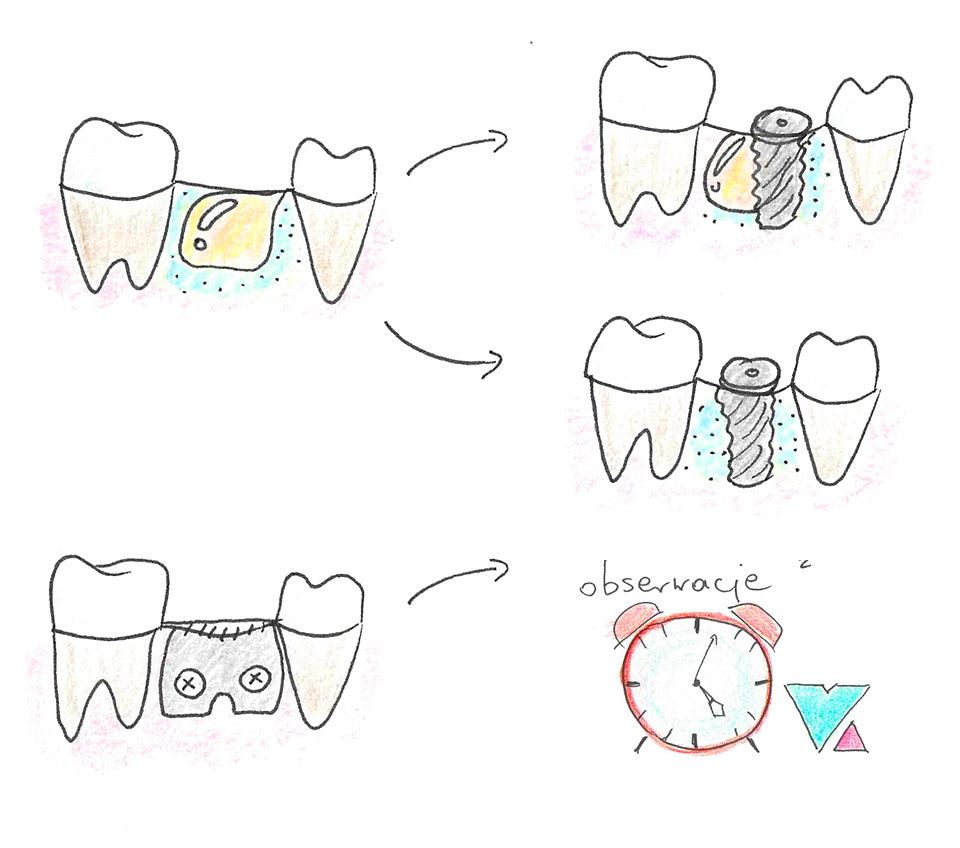
What are membranes? What types are there?
The membrane - also known as a barrier - separates the bone from the gum. It acts as a physical barrier (hence the name barrier membrane) preventing the gum (soft tissue) from growing into the bone.
Its use is due to the fact that soft tissues (like gums) grow much faster than bone. Therefore, to prevent them from growing into the bone substitute and pushing it out - we protect this area with a membrane.
Depending on the size of the bone being rebuilt, we use collagen, titanium, titanium-reinforced PTFE membranes, and others.
